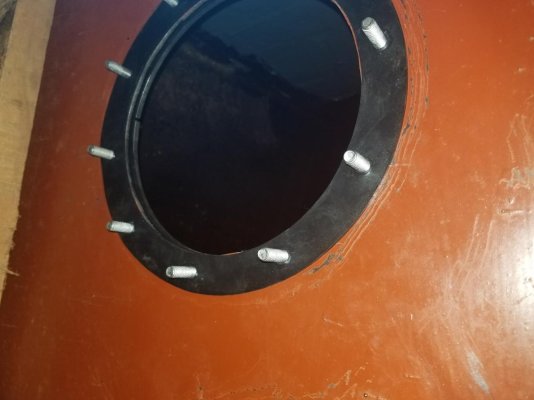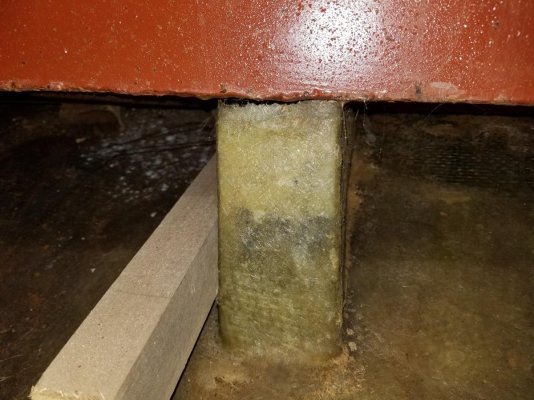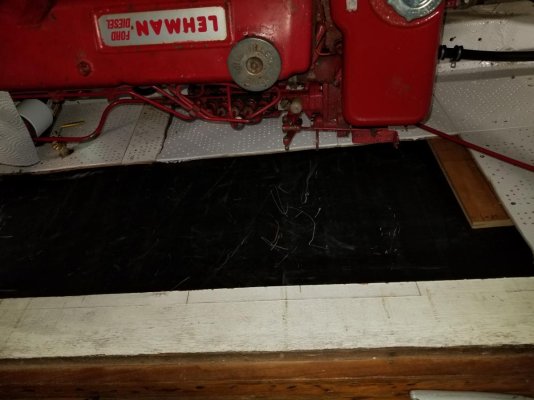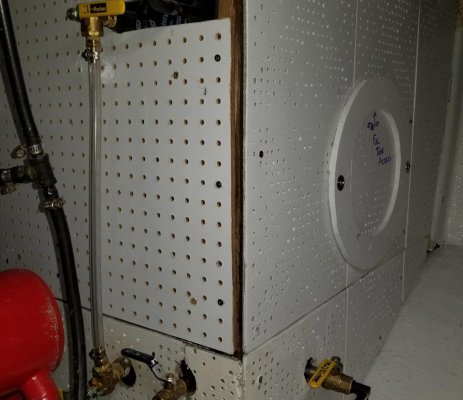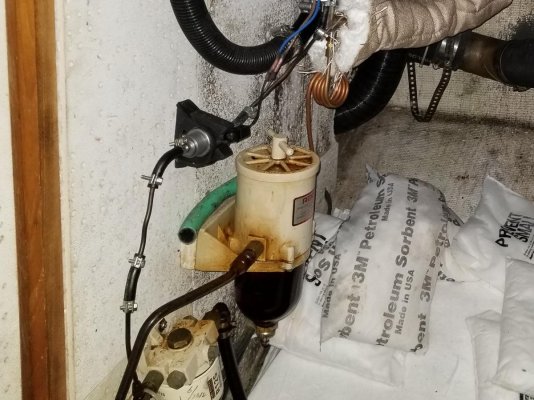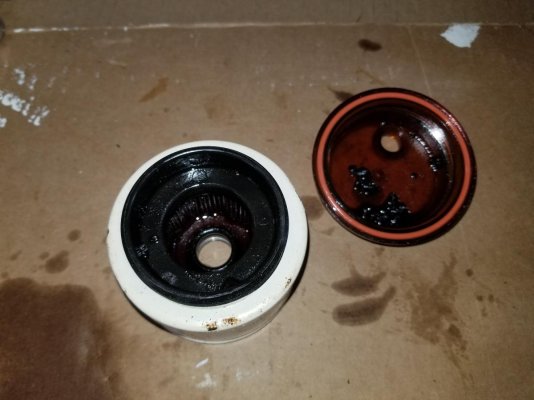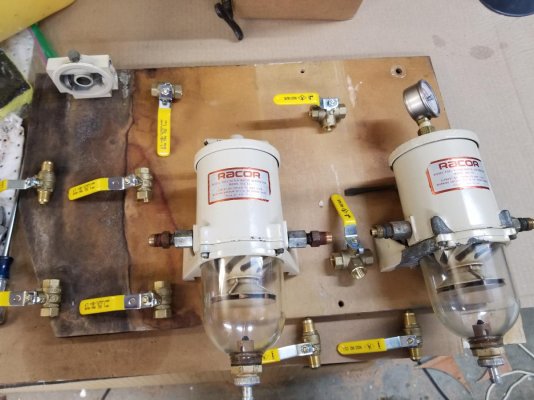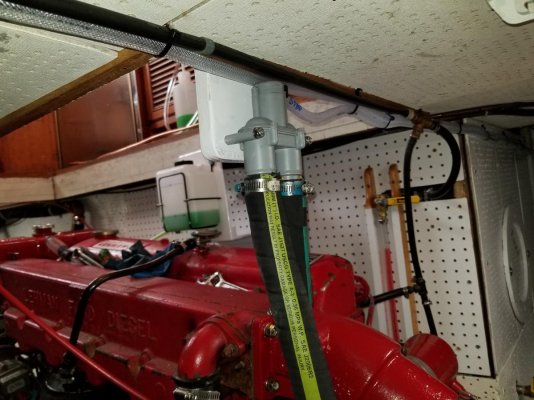fractalphreak
Senior Member
- Joined
- Jun 23, 2018
- Messages
- 318
- Location
- United States
- Vessel Name
- Northwest Dream
- Vessel Make
- Davis Vashon 42 Trawler (Defever design)
Here is the refit thread I promised after announcing we are trawler owners. To recap, the boat is a 1980 Davis Vashon 42 trawler that is a Defever design or copy. It was built by the Sei Yen Enterprise yard in the east of Taipei (I think) near Keelung. The boat is 42 x 14 with 4'3" draft and displaces approximately 30,000 lbs. it is documented and has been for most or all of its life. I believe we are the fourth owners. The first was the owner of Crow Roofing in Seattle - the only record I have of his ownership is his name on the engine warranty cards I have. I have surveys, receipts, and other documentation from the other two owners. The boat has had a lot of professional yard and marine service work over the years. Many systems have been upgraded, some have not. The engines, transmissions, and genset are from when the boat was built. Some systems, like most of the domestic water lines, are original (copper!) Others, like the heads, have been replaced with newer (they are freshwater electric flush going into the factory fiberglass tank that is integral with the hull and stringers aft of the engine room.
Our price range / financial means and my skills put us in a position of buying a well used boat with some necessary projects. We set aside a full third of our available funds for repair, refit and upgrades and then factored in what those costs might be for each boat we looked at to find one that made sense.
(My spreadsheet to track all of the myriad details went from column A to AT, and was basically a color coded checklist of features, price, design, maintenance needs, hidden risks, and what upgrades the boat would need to match our desires.)
So we bought the boat, knowing the following repairs and maintenance would be needed - since we'd set aside the cash for it they are happening now and quick. We want to turn the boat around and begin enjoying it next cruising season (or even this winter!)
Initial Major/Priority projects for boat preservation/usability
1 - Exhaust elbows - non-standard, causing likely salt water drip back to end of exhaust manifold.
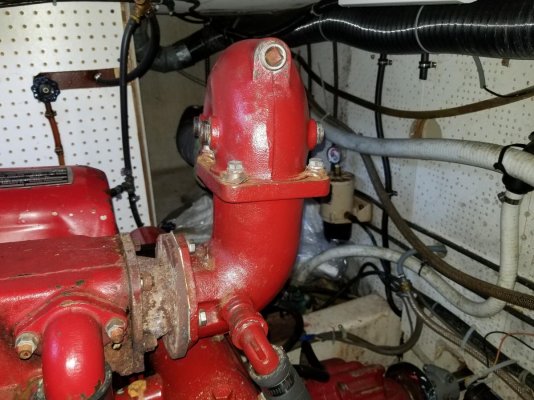
2 - Batteries - House batteries, while high quality, are at end of life

3 - Windows - show signs of past leak activity. Appears PO had put some sealant on exterior without disassembling and truly rebedding.

4 - Aft house deck - shows signs of weakening. Surveyor was not too concerned except for one area with some high moisture, but deck is misshapen and has some flex to it when a bulky individual (me) steps or bounces on it too heavily. We bought boat anticipating a complete aft house deck recore job. As we anticipate having the tender on the aft deck while in the marina (we are right at the tipping point from one dock size to another, and long term keeping it on the aft house top will keep our costs down.)

5 - Teak trim around base of house at deck coming loose in spots, needs to be removed, rebedded, refinished.

There are a myriad of smaller projects, but these are some of the first big ones to tackle. Our work list between survey findings and our own findings and upgrades is about 175 items.
The above are our initial major projects.
Battery Bank
The house batteries were very nice Northstar batteries, but at 10 years old and always running a decently large fridge/freezer they could not keep up with the boat aH requirements. The house bank consisted of two of these batteries. My computations of the boat's equipment and our own needs put our minimum USABLE bank at 200-210 aH per day, which with good AGM batteries would require at least 300-350 aH for some longer life, and with lead-acid at lest 500 aH. Cost wise I just couldn't do $1,800 to do AGMs and instead have gone with paired GC-2 lead acid. My 630 aH bank will end up costing about $650 with tax, plus another few hundred for cabling and tools to make said cabling (our 2,000 amp Magnum inverter/charger has us at 2/0 cable for the house.) My projected use of the bank has us using approximately 1/3 per day, which with proper water topping off should give us good life. The bank is in battery boxes in between the engine stringers and under false floor panels for (relatively) easy access. I made sure all the cables for pairing and paralleling the pairs are out of the way of refilling water. This project is 75% complete. I still need to buy and install two more batteries. I already have the cables made, and have to do the install. My apologies for not having photos of this, but we went ahead with the bank install our third day on the boat as the old batteries couldn't make it through the night with our fridge and my CPAP!
Next post with photos, will be about the engine exhaust elbows...
Our price range / financial means and my skills put us in a position of buying a well used boat with some necessary projects. We set aside a full third of our available funds for repair, refit and upgrades and then factored in what those costs might be for each boat we looked at to find one that made sense.
(My spreadsheet to track all of the myriad details went from column A to AT, and was basically a color coded checklist of features, price, design, maintenance needs, hidden risks, and what upgrades the boat would need to match our desires.)
So we bought the boat, knowing the following repairs and maintenance would be needed - since we'd set aside the cash for it they are happening now and quick. We want to turn the boat around and begin enjoying it next cruising season (or even this winter!)
Initial Major/Priority projects for boat preservation/usability
1 - Exhaust elbows - non-standard, causing likely salt water drip back to end of exhaust manifold.

2 - Batteries - House batteries, while high quality, are at end of life

3 - Windows - show signs of past leak activity. Appears PO had put some sealant on exterior without disassembling and truly rebedding.

4 - Aft house deck - shows signs of weakening. Surveyor was not too concerned except for one area with some high moisture, but deck is misshapen and has some flex to it when a bulky individual (me) steps or bounces on it too heavily. We bought boat anticipating a complete aft house deck recore job. As we anticipate having the tender on the aft deck while in the marina (we are right at the tipping point from one dock size to another, and long term keeping it on the aft house top will keep our costs down.)

5 - Teak trim around base of house at deck coming loose in spots, needs to be removed, rebedded, refinished.

There are a myriad of smaller projects, but these are some of the first big ones to tackle. Our work list between survey findings and our own findings and upgrades is about 175 items.
The above are our initial major projects.
Battery Bank
The house batteries were very nice Northstar batteries, but at 10 years old and always running a decently large fridge/freezer they could not keep up with the boat aH requirements. The house bank consisted of two of these batteries. My computations of the boat's equipment and our own needs put our minimum USABLE bank at 200-210 aH per day, which with good AGM batteries would require at least 300-350 aH for some longer life, and with lead-acid at lest 500 aH. Cost wise I just couldn't do $1,800 to do AGMs and instead have gone with paired GC-2 lead acid. My 630 aH bank will end up costing about $650 with tax, plus another few hundred for cabling and tools to make said cabling (our 2,000 amp Magnum inverter/charger has us at 2/0 cable for the house.) My projected use of the bank has us using approximately 1/3 per day, which with proper water topping off should give us good life. The bank is in battery boxes in between the engine stringers and under false floor panels for (relatively) easy access. I made sure all the cables for pairing and paralleling the pairs are out of the way of refilling water. This project is 75% complete. I still need to buy and install two more batteries. I already have the cables made, and have to do the install. My apologies for not having photos of this, but we went ahead with the bank install our third day on the boat as the old batteries couldn't make it through the night with our fridge and my CPAP!
Next post with photos, will be about the engine exhaust elbows...
Last edited:


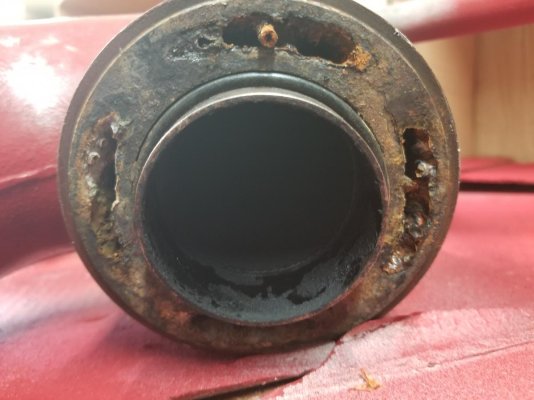




 ) so I didn't get the elbows pulled yet. Hopefully this weekend...
) so I didn't get the elbows pulled yet. Hopefully this weekend...


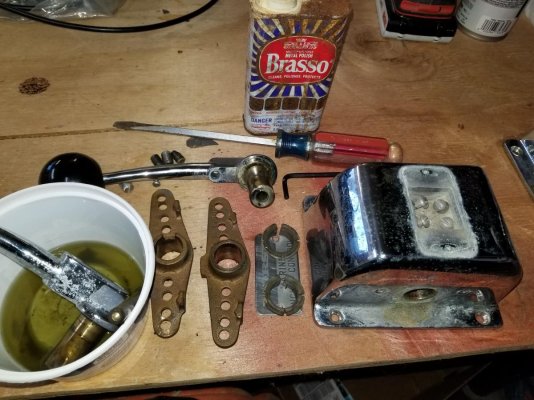
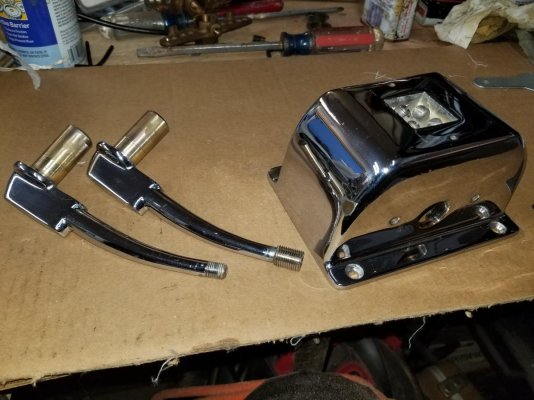


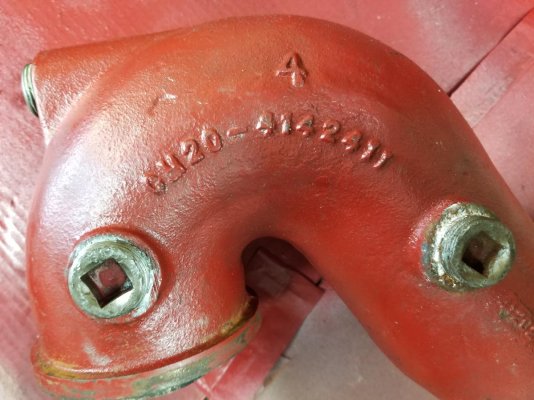
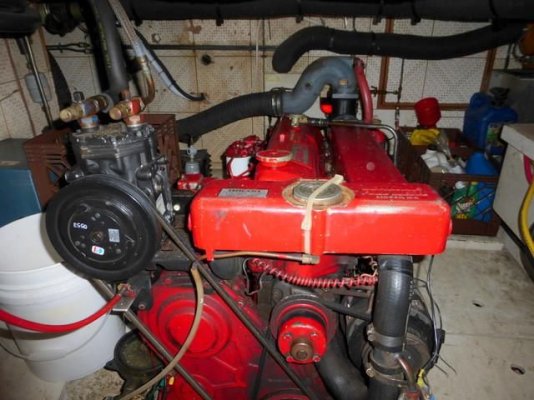





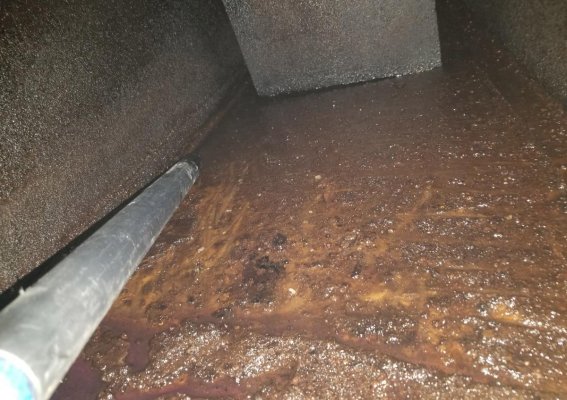

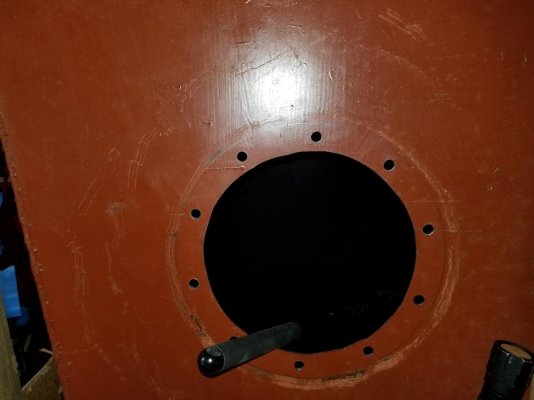


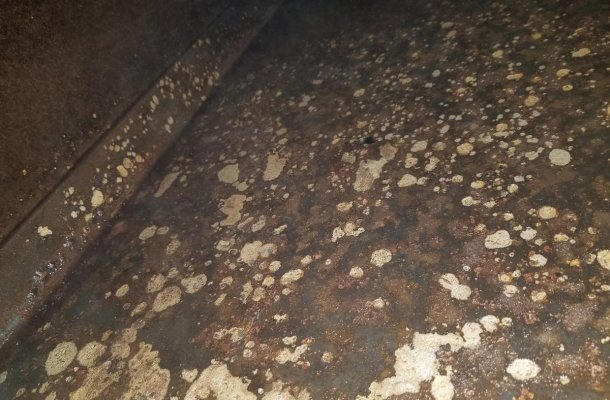
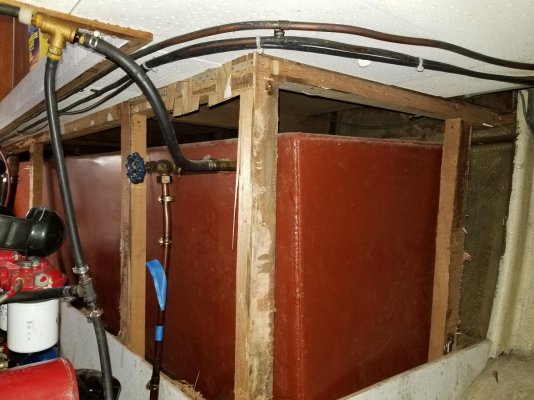
 I keep thinking, why didn't my surveyor see all this stuff, but I realize that I've spent a dozen hours fretting about the fuel system alone and just realized it...And he DID find plenty.
I keep thinking, why didn't my surveyor see all this stuff, but I realize that I've spent a dozen hours fretting about the fuel system alone and just realized it...And he DID find plenty. ) and the boat, I've had very little time to document all this work and do it justice.
) and the boat, I've had very little time to document all this work and do it justice.

